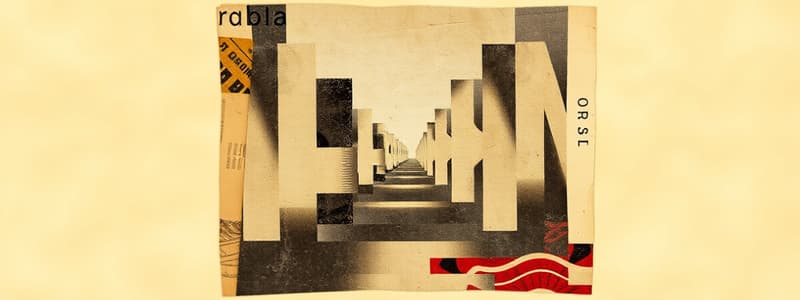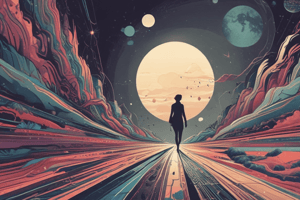Podcast
Questions and Answers
Overlapping refers to one object completely covering another in a composition.
Overlapping refers to one object completely covering another in a composition.
False (B)
Perspective in art only pertains to the colors used and not the illusion of depth.
Perspective in art only pertains to the colors used and not the illusion of depth.
False (B)
Tactile texture can be perceived only through visual observation.
Tactile texture can be perceived only through visual observation.
False (B)
Visual texture refers to how things feel when touched.
Visual texture refers to how things feel when touched.
Examples of visual texture techniques include scrapping and stenciling.
Examples of visual texture techniques include scrapping and stenciling.
Flashcards are hidden until you start studying
Study Notes
Composition Techniques
- Overlapping is used to indicate distances in a composition by having one object partially cover another, creating depth perception.
Perspective
- Perspective creates the illusion of depth on a two-dimensional surface, influenced by color strength and spatial depth representation.
Texture in Art
- Texture is an essential element in art that relates to how surfaces feel or appear.
Types of Texture
-
Tactile texture (real or physical) can be perceived through touch, varying across materials:
- Sandpaper is rough
- A pillow is soft
- Glass is smooth
-
Visual texture is the appearance of texture in an image that can only be seen, not felt.
- Techniques like scraping, stenciling, and printing can be employed to create visual textures in artwork.
Studying That Suits You
Use AI to generate personalized quizzes and flashcards to suit your learning preferences.





